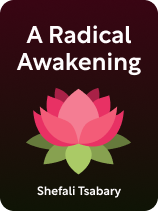

This article is an excerpt from the Shortform book guide to "A Radical Awakening" by Shefali Tsabary. Shortform has the world's best summaries and analyses of books you should be reading.
Like this article? Sign up for a free trial here.
Why do women feel pressured to change their appearance? What can they do to resist harmful beauty standards?
Beauty standards for women evolve over time, yet they consistently create unrealistic expectations that can damage self-worth. From Victorian-era preferences for plumpness to modern obsessions with thinness, these ideals force many women to pursue dangerous alterations to their bodies.
Read on to discover how to break free from these restrictive standards and embrace your natural self.
Harmful Beauty Standards for Women
Dr. Shefali Tsabary contends that society’s strict beauty standards for women put constant pressure on them to be young and skinny with light skin, hair, and eyes. However, these standards are unrealistic for most women—especially for those of non-European descent. Despite this, women are made to feel ugly and unworthy when they don’t meet these standards—for example, when they age or gain weight. These feelings of unworthiness often drive them to dress up, dye their hair, pile on makeup, or even undergo procedures and surgeries to alter their appearance.
(Shortform note: Women have attempted to alter themselves throughout history to meet the beauty standard, and this can be stressful because the beauty standard is constantly changing. For example, up until the Victorian era, plumpness was preferred over being skinny. However, in today’s society thinness is preferred and many women go to extreme lengths to lose weight, including developing eating disorders. This isn’t the case everywhere though. For example, in Sudan, plumpness is still preferred and women often take potentially dangerous weight gain pills to attempt to meet this beauty standard. Ultimately, no matter when or where, beauty standards for women are harmful.)
However, Tsabary notes that, when women attempt to improve their appearance, they make matters worse for women as a whole. The more women adhere to beauty standards and change themselves to meet them, the more they strengthen these standards and the belief that looking different makes them unworthy.
(Shortform note: Tsabary’s advice to combat patriarchal beauty standards by going au naturel and resisting any self-altercation whether from clothes, cosmetics, or surgeries can be more complicated than it seems. For example, many women see these alterations as a form of self-empowerment, enjoyment, or self-expression. However, digging deeper, this makes us question whether we enjoy these alterations because they make us feel prettier, and who put these ideals of “pretty” in our head—maybe it was the media or another patriarchal influence, as Tsabary claims.)
Instead, Tsabary proposes that we resist altering ourselves to meet standards—for example, wear your natural hair, don’t alter your appearance with heavy makeup or surgery, and dress in comfortable clothes rather than clothing meant to boost your attractiveness. Further, stop using words like beautiful or perfect to describe appearances—doing so implies that alternative appearances are ugly or flawed. Instead, simply accept and label your body as it is. For example, rather than saying “my curves are beautiful,” say “I love my curves.”
(Shortform note: In Come As You Are, Emily Nagoski has additional recommendations to help you start loving your natural appearance more. For example, battle your tendency to judge yourself more harshly than you would others by looking at your naked body every day in the mirror and listing all the details you like about yourself. Further, ignore negative media—for example, unfollow Instagram models or other social media accounts that make you negatively compare yourself to others.)

———End of Preview———
Like what you just read? Read the rest of the world's best book summary and analysis of Shefali Tsabary's "A Radical Awakening" at Shortform.
Here's what you'll find in our full A Radical Awakening summary:
- The patriarchy’s impact on women’s sense of identity
- The destructive societal myths that dictate women’s lives
- How women can break the patriarchal cycle they were raised in






